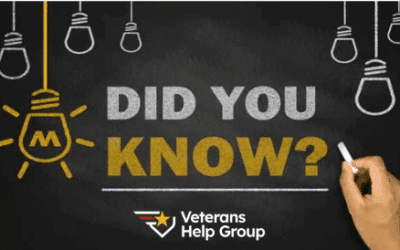VETERANS HELP GROUP
Veterans pension program vs. disability compensation payment
Not every veteran qualifies for a pension, and veterans who do qualify for pension benefits may have to choose between their pension and other benefits, such as VA disability benefits. Here’s what you need to know about veterans pensions, who qualifies, how to get benefits, and how other benefits may be affected.
Who Is Entitled to Veterans Pension Benefits?
To be eligible for VA pension benefits, the veteran must have served:
- For a veteran who started active duty before September 8, 1980, at least 90 days on active duty with at least one active day during wartime
- For a veteran who started on active duty on or after September 8, 1980, at least 24 months or the full term of service commitment with at least one active day during wartime
Officers who started active duty after October 16, 1981, may also be eligible if they did not previously serve at least 24 months on active duty.
What is “Wartime”?
For purposes of a VA pension, “wartime service” means:
- May 9, 1916-April 5, 1917, for veterans who served in Mexico, on its borders or in adjacent waters (Mexican Border Period)
- April 6, 1917-November 11, 1918 (World War I)
- December 7, 1941-December 31, 1946 (World War II)
- June 27, 1950-January 31, 1955 (Korean Conflict)
- November 1, 1955-May 7, 1975 (Vietnam War, for veterans who served in country)
- August 5, 1964-May 7, 1975 (Vietnam War, for veterans who served outside the Republic of Vietnam)
- After August 2, 1990 (Gulf War–end date as yet undetermined)
Other Qualifications for VA Pension Benefits
Simply having served during the right time period isn’t sufficient to qualify a veteran for a VA pension. The veteran must also:
- Not have a discharge status of dishonorable, other than honorable, or bad conduct, and
- Meet income and net worth qualifications
If a veteran’s discharge status disqualifies them from receiving a VA pension, it may be possible to apply for a discharge upgrade.
In addition, veterans pension benefits only become available when the veteran:
- Is at least 65 years old, or
- Has a permanent and total disability, or
- Is a patient in a nursing home or other long-term care facility due to a disability, or
- Is receiving Social Security Disability (SSD) or Supplemental Security Income (SSI)
VETERANS PENSION VS. VA DISABILITY
LATEST NEWS
Sleep Apnea – What to Know If You Were Exposed to Burn Pits
Sleep Apnea - What to Know If You Were Exposed to Burn Pits Recently, the...
Is My VA Disability Considered Income?
Is My VA Disability Considered Income? Disabled veterans benefits can...
VA Caregiver Support Program: What Veterans and Families Should Know
VA Caregiver Support Program: What Veterans and Families Should Know...
FREE CASE EVALUATION
"*" indicates required fields





